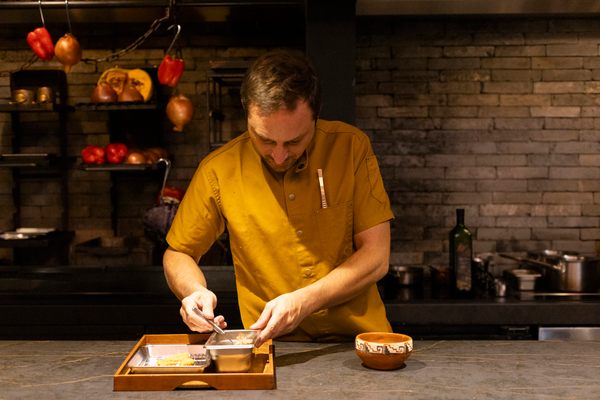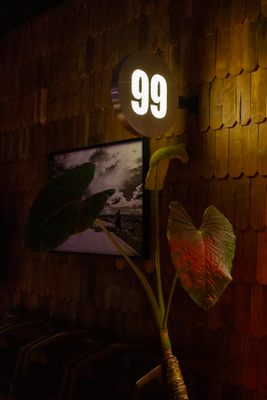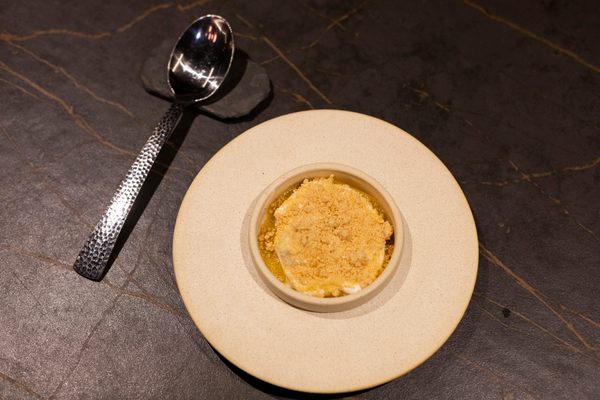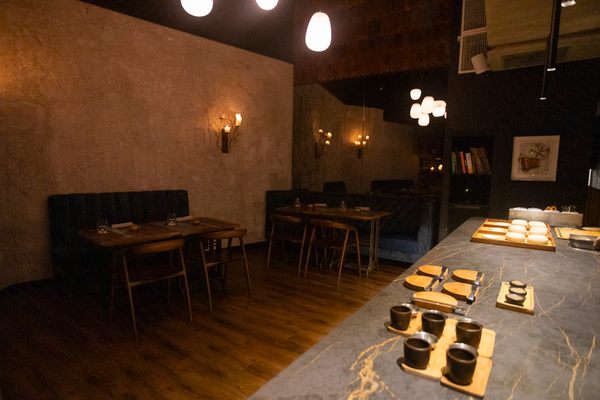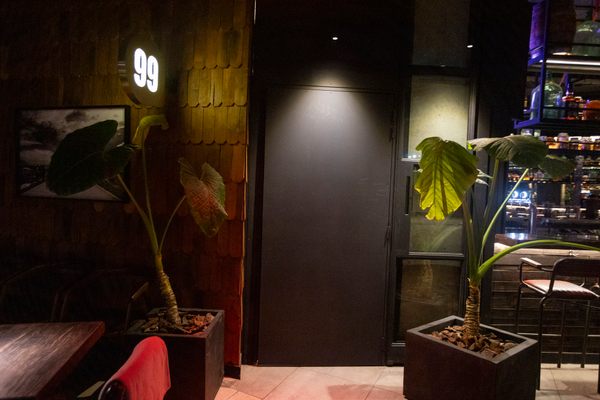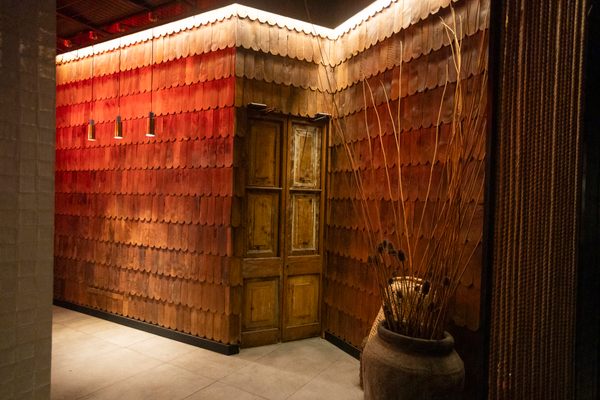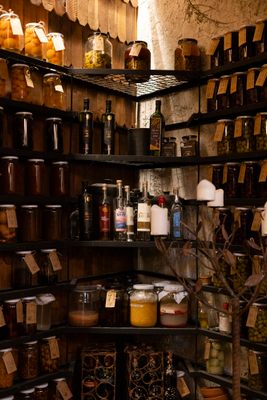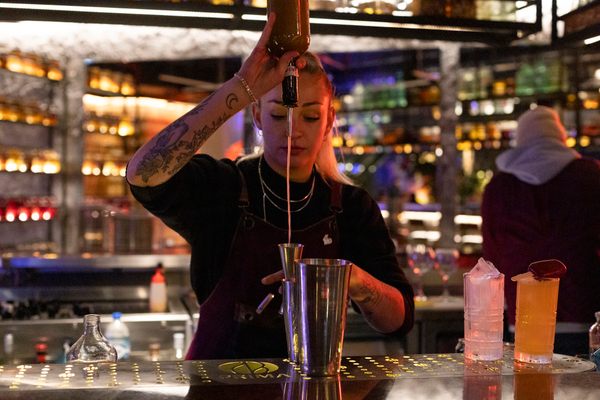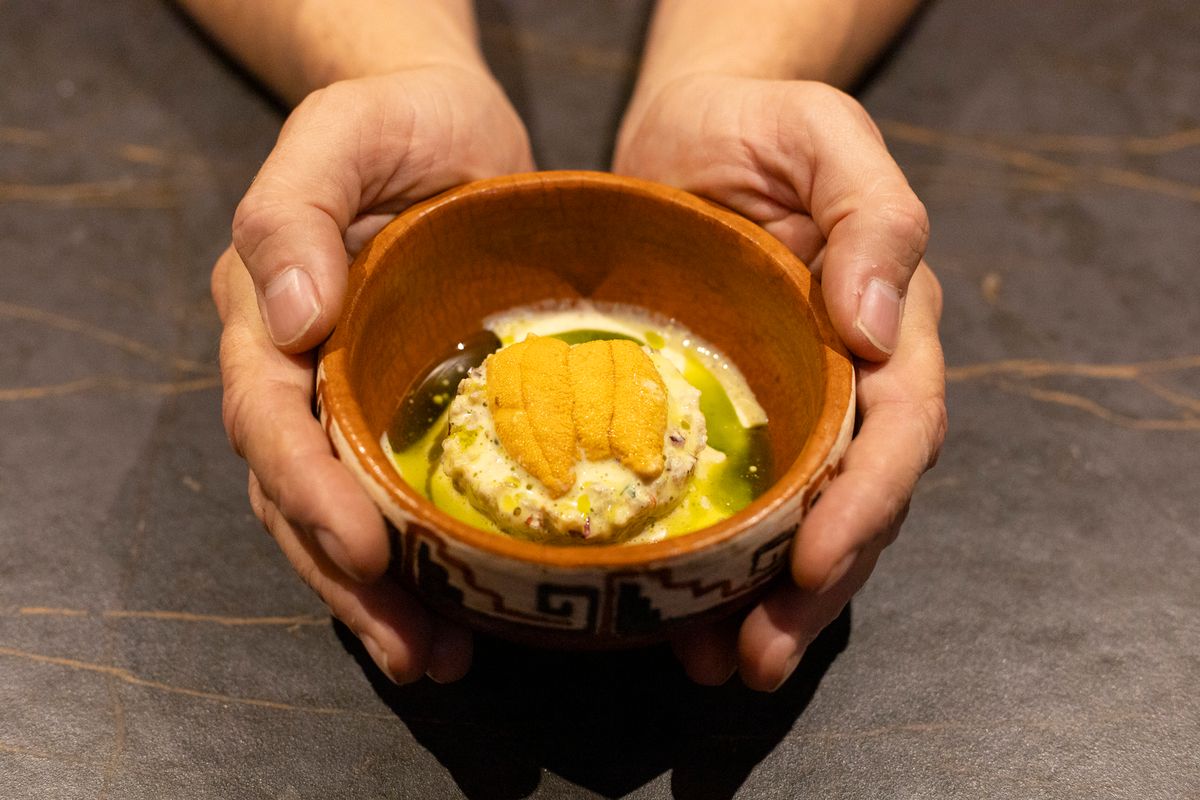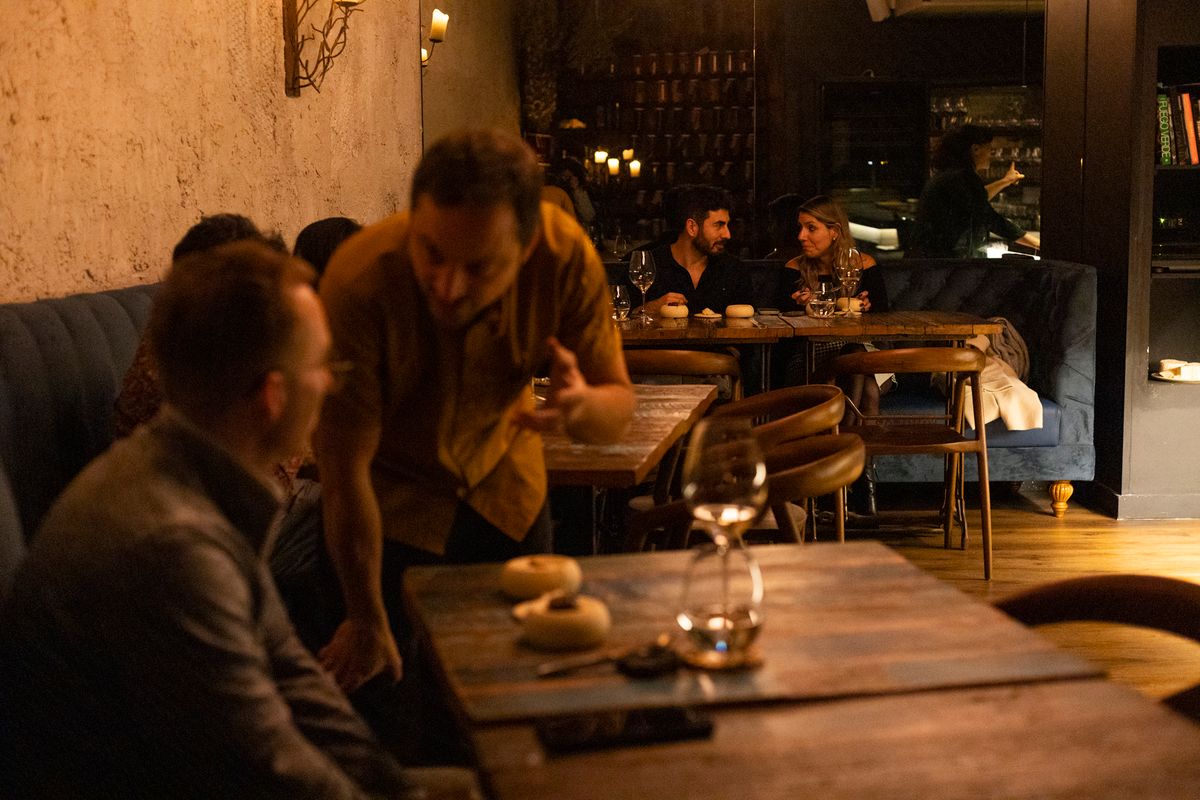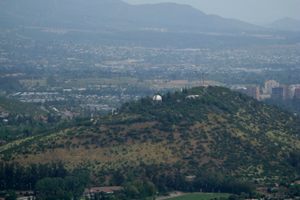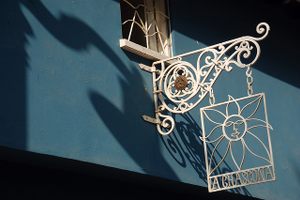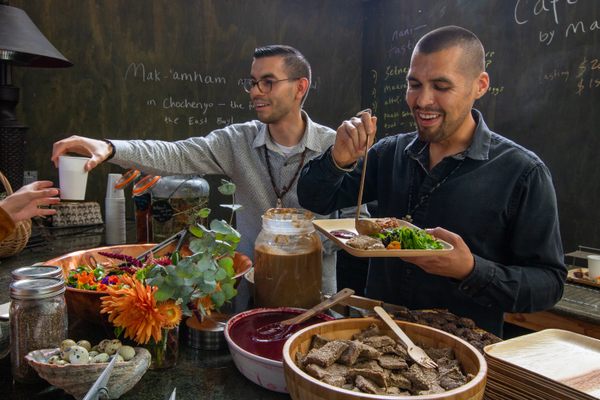About
Many high-end degustation restaurants aim for bold theatrics, molecular gastronomy, and colorful plates that will pop on Instagram. Chef Kurt Schmidt instead grounds 99 Restaurante in anthropology, meticulously studying the foodways of one Chilean agricultural valley at a time to design his rotating nine-course menu. The idea is to have a culinary history lesson rooted in honest flavors and sustainably-sourced ingredients.
The entire experience is intimate; the restaurant has seven tables (which are actually antique sewing desks) for a total of 14 guests. Diners start their meal at the same time, and they watch as the nine courses take shape in the open kitchen, just steps away. Curious to know what’s next? You can simply walk up and ask the chef, whose role is to curate the story of the designated Chilean valley.
The three-hour experience happens on the edge of Schmidt’s more casual eatery, Prima Bar. In fact, 99’s small dining space is hidden behind a wall at Prima Bar designed to replicate a palafito home from Chiloé, with wooden tiles (called tejuelas) made from native alerce wood.
The agricultural valley in focus changes twice each year. The inaugural location in 2024, when 99 reopened with a new concept after a four-year hiatus, was Huasco, about 700 kilometers (435 miles) north of Santiago on the southern edge of the Atacama Desert. Dishes on this menu included traditional donkey sausage; ice creams based around goat cheese and Chilean papayas (which are small, yellow, and mango-like in flavor); and a cold, ceviche-like mariscal with lapas (sea snails), piure (sea squirts), and sea urchins. Other Atacama seafoods like cochayuyo (a bull kelp) and locos (a large Chilean abalone) got similar star treatment. Many dishes were served in traditional red, white, and black pottery from the Diaguita, the area’s Indigenous community.
To develop the menu, a team traveled to Huascoto meet its farmers, visit its fishing coves, and dine in its restaurants as well as rural homes.With producers creating wine from the Atacama Desert all the way down to northern Patagonia, sommelier Rocio Alvarado is also able to build hyperlocal wine pairings for each menu. She, too, travels to each valley to find local producers, often working with them to create bottles that will only ever appear at 99. For the Huasco Valley menu, for example, she cut the fat of billy goat meat with a powerful Petit Verdot developed exclusively to match that dish.
Unlike other anthropologically-minded restaurants in Chile, the mood here is not of a museum. There is no craft store or incessant panpipe music. In fact, the upbeat soundtrack might be best described as Andean EDM. Schmidt goes out of his way to ensure that the ambiance is cozy, but not sleepy. Yes, it’s a place to learn about Chilean foodways, but you’re meant to let down your hair while doing it.
Related Tags
Published
June 26, 2024

